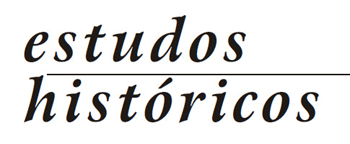ABSTRACT
This article investigates whether the introduction of the secret ballot in 1932 constitutes a change to the model adopted in the First Republic, where parties organized voters, mobilizing and controlling them in the act of voting. Based on an analysis of the newspapers at that time and the electoral results of the 1934 election, I show that the effect of the reform is not significant. Even though voters cast their votes in an isolated environment, ballots were printed and distributed by parties. Candidates and parties managed to bring together and mobilize voters in elections by organizing the preparation and distribution of ballots.
KEYWORDS:
Vargas; Secret Vote; Elections; Democracy; Parties; Citizenship

 Thumbnail
Thumbnail
 Thumbnail
Thumbnail
 Thumbnail
Thumbnail
 Fonte: Elaboração própria com base no Diário do Congresso Nacional, 24 jul. 1910; 31 maio 1922; 01 e 08 jun. 1922; 16, 17 e 18 maio 1930.
Fonte: Elaboração própria com base no Diário do Congresso Nacional, 24 jul. 1910; 31 maio 1922; 01 e 08 jun. 1922; 16, 17 e 18 maio 1930.
 Fonte: Elaboração própria com base nos Boletins Eleitorais do Tribunal Eleitoral Superior, 1934–1935.
Fonte: Elaboração própria com base nos Boletins Eleitorais do Tribunal Eleitoral Superior, 1934–1935.
 Fonte: Elaboração própria a partir de diferentes fontes. Piauí: Boletim Eleitoral do Tribunal Eleitoral Superior, 16 fev. 1935; Rio de Janeiro: Diário Carioca (edições diárias de 08 nov. 1934 a 12 dez. 1934; Rio Grande do Sul: A Federação, 14 nov. 1934; Santa Catarina: República (edições diárias de 20 out. 1934 a 30 nov. 1934); Sergipe: Diário da Justiça do Estado de Sergipe (edições diárias de 19 out. 1934 a 31 jan. 1935); São Paulo: Folha de São Paulo, 02 dez. 1934.
Fonte: Elaboração própria a partir de diferentes fontes. Piauí: Boletim Eleitoral do Tribunal Eleitoral Superior, 16 fev. 1935; Rio de Janeiro: Diário Carioca (edições diárias de 08 nov. 1934 a 12 dez. 1934; Rio Grande do Sul: A Federação, 14 nov. 1934; Santa Catarina: República (edições diárias de 20 out. 1934 a 30 nov. 1934); Sergipe: Diário da Justiça do Estado de Sergipe (edições diárias de 19 out. 1934 a 31 jan. 1935); São Paulo: Folha de São Paulo, 02 dez. 1934.